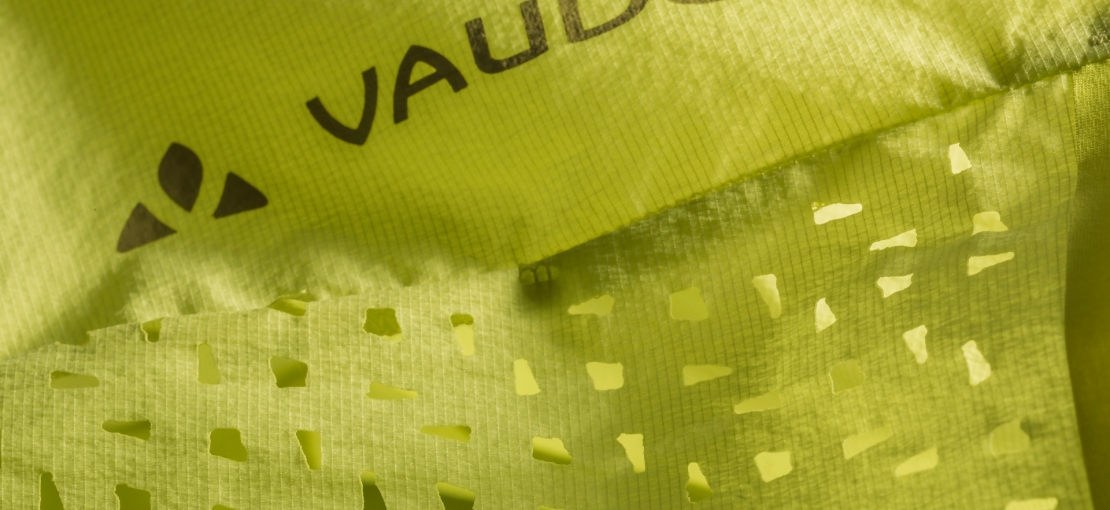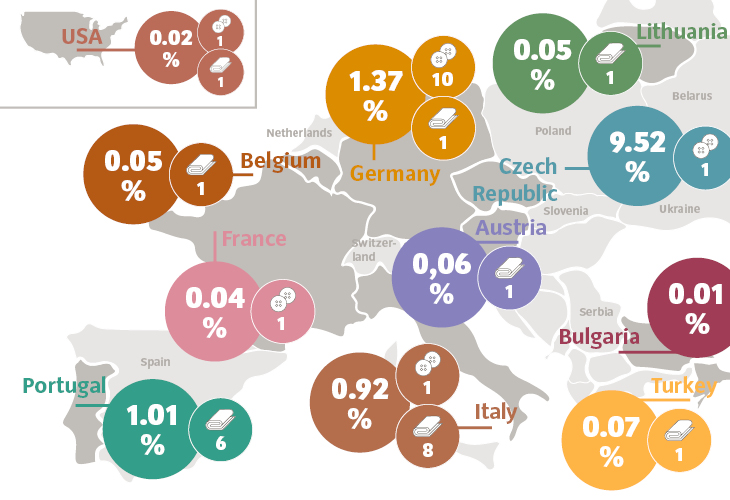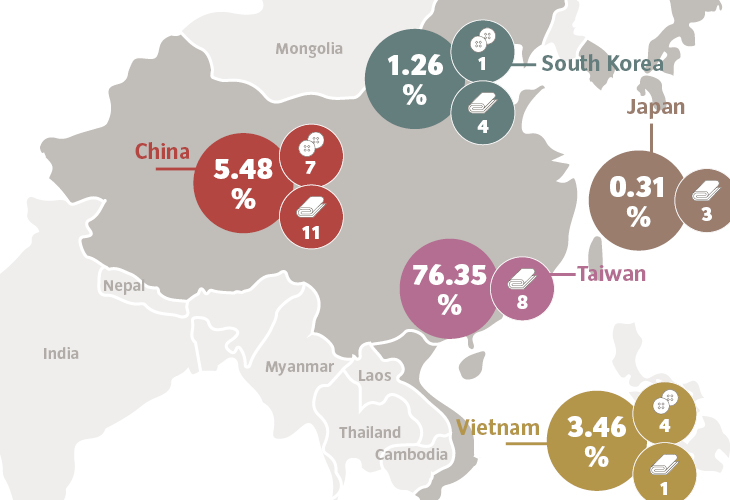
The best for your product: performance × responsibility
Performance meets Ecology
Your VAUDE products should offer reliable protection from the weather – including the pouring rain, baking sun, howling winds or freezing cold. They should help you to enjoy everything our wonderful planet has got to offer, to achieve your best and serve you for years on your outdoor adventures.
We carefully select our materials so that you get the best product for your activity. VAUDE materials combine top quality with technical performance and ecological responsibility.
Voluntary, consistent, strict
The sustainability of your VAUDE product begins with our designers’ first product ideas. They are the ones who decide what materials and technologies to use. Selecting eco-friendly materials can keep a product’s ecological footprint (indicating how much emissions are caused for the production of the product) small.
Behind the scenes, VAUDE has made a commitment to using the best (most environmentally friendly) technologies, to eliminating the use of controversial technologies and materials, and to ensuring maximum traceability of all materials to their origin.
In the VAUDE Material Policy, we regulate which materials are allowed and which conditions need to be met during the production of raw materials, cultivation and processing.
Consistently strict also means that we ensure the greatest possible transparency for natural materials that could be critical from an environmental or animal welfare point of view. This means that we check very carefully where the wool, down and cotton come from, whether they meet the requirements defined in our Material Policy and are certified according to the standards we require. For example, we only use down that is certified by the Responsible Down Standard. You can find more info here.
Precautionary Principle: no unexpected surprises
While some competitors rely on nanotechnology or use materials made from genetically modified raw resources, we at VAUDE work in accordance with the precautionary principle: Until a technology is scientifically classified as harmless, we keep our hands off it.
In this process we include the opinions of experts from within and outside our industry such as the Federal Environment Agency, universities, and civil society organizations like the WWF Germany.
In our opinion, the industry has often brought alleged innovations to the market without adequately assessing the risks in advance. When it turns out that they are harmful to health or the environment, the damage has already been done. A current example: fluorocarbon technology for water-repellent materials. Why are they harmful and why did VAUDE stop using them? Find out more here.
A balancing act for product developers
The strict standards that we apply in our VAUDE Material Policy are also reflected in our Green Shape product philosophy - see Green Shape.
This balancing act is a challenge for our product developers; more sustainable materials frequently cost more than their conventional counterparts, are more difficult to obtain, they require different processing or are used differently.
From A for “air quality” to Z for “zero emissions”, we take all environmental impacts into consideration.
As we revised our Green Shape product philosophy for the S22 Collection, we also reviewed our VAUDE Material Policy and standardized the environmental aspects it encompasses.
We used sound, scientific methods in order to achieve a uniform, holistic environmental analysis of our materials. We examine each material thoroughly and investigate its impact based on the planetary boundaries concept which identifies planetary life support systems essential for human survival including the following:
- Climate change
- Fresh water
- Land use
- Biodiversity loss
- Chemical pollution
- Ocean acidification
You can find more info about planetary boundaries here.
The Planetary Boundaries, together with the Material Sustainability Index criteria of the Higg Index, form the basis for the “Eco Aspects” newly included in the VAUDE Material Policy. We have defined these aspects for the materials that we use. The Eco Aspects address the environmental impact of our materials and give designers and product developers an overview of the sustainability of the materials and also a way of comparing them with each other.
Our goals for the use of recycled or biobased materials are ambitious
The processing of fossil fuels can come up with environmental issues which occure due to crude oil production like oil contamination on soil and water bodies. Additional green house gas is released since the extraction is very energy intensive. In addition calculated emissions caused by natural gas production often do not include negative effects to climate by deforestation and further land use change to built up new gas fields and pips. Furthermore, leakage in pipe release methane in the atmosphere which is a strong greenhouse gas. Due to the listed risks and because VAUDE is committed to the principle of the circular economy we want to use recycled or biobased materials where ever possible.
Our tangible goal is:
By 2024, 90 % of all VAUDE products will have a recycled or biobased material content of more than 50 %.
Our product development department is working diligently to achieve this goal.
You can find out how the use of recycled and biobased materials affects our climate footprint here.
You can find out how the use of recycled and biobased materials affects our climate footprint here
Your decisions count!
With your purchasing decisions, you can help to make your product more environmentally friendly:
- Water repellency without fluorochemicals: Choose a more environmentally friendly product - without compromising functionality! How does it work? Read more here.
- If it’s got to be cotton, make it organic! This is much less damaging to the environment than conventional cotton, as less chemicals and less water are needed to grow it. Read more here: Organic cotton is better for people and the planet.
- Recycled materials reduce the use of raw materials, energy consumption and CO2, but not functionality! More at New fabrics from used fishing nets.
- Systematic is better: With the help of the bluesign® system, VAUDE reduces its use of raw materials, energy, water, wastewater, waste materials and chemicals in the processing of polyester and polyamide.
A clean supply chain and a clean conscience
We set standards for environmentally friendly products throughout the industry with the VAUDE Green Shape criteria. Other brands are welcome to join us!
Transparency throughout the supply chain is important, but it is often non-existent in textile production. Therefore we are working actively with the federal government’s Partnership for Sustainable Textiles as well as on the development of the Higg Index. This international databank is used to measure environmental and social aspects. Read more here.
Recycled materials reduce raw material, energy consumption and CO2, but not functionality!


We help our suppliers to work more environmentally friendly: With the Vendor Management und den VAUDE Vendor Management and the VAUDE Vendor Club. Find out more here.
People and the planet go hand in hand. As a Fair Wear Foundation member with leader status, we ensure fair working conditions. More about it here.
| GRI: | 301-1 |
| GRI: | 301-2 |




